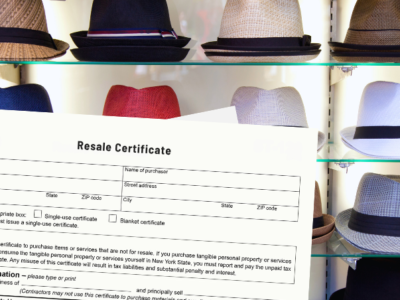
The marketing landscape is continually evolving, and discerning between business-to-business (B2B) and business-to-consumer (B2C) marketing is essential for the success ofa marketer. While both types of marketing identify customer needs and deliver value, they have different execution strategies.
The significance of B2B and B2C marketing
B2B marketing, which involves business-to-business transactions, demands a more nuanced approach. It requires understanding complex business needs, decision-making processes that involve multiple stakeholders, and solving problems that help businesses grow. On the other hand, B2C marketing targets individual consumers. It is for the public, and it focuses on understanding consumer behavior, lifestyle preferences and the emotional triggers that compel people to buy.
If you want to deepen your understanding of these marketing pathways, the online Master of Communication programoffered by St. Bonaventure University can help. This 100% online course provides lessons on advanced communication strategies to help you scale any business, whether it is marketing B2B or B2C. You’ll understand why buyers buy, how to appeal to their emotional and logical triggers, and how to be an impressive marketer. In other words, you’ll understand the ins and outs of content marketing and you can graduate within 22 months of flexible online learning.
Before digging into the course, read on to understand the differences between B2B and B2C marketing and their significance in today’s marketing industry.
Business-to-Business (B2B) marketing
B2B marketing focuses on the selling of products (physical or digital) or services between one business and another. It addresses the needs and interests of individuals who purchase on behalf of their organizations. This form of marketing is distinguished by several features that shape its strategies and outcomes.
One of its features is the longer sales cycles. Unlike B2C transactions, which can be impulsive and driven by personal desire, B2B transactions are more deliberate and calculated. No business wants to splurge on products or services that won’t help them scale upor improve business operations.
Thus, the sales cycle (the time it takes a business to know about a product and the time it takes them to ultimately buy it) often involves a series of stages. This includes awareness (when they see the product), consideration, and decision stages – these can span weeks, months or even years. This extended timeframe is due to the high cost of B2B transactions, the higher stakes involved, and the need for thorough vetting and approval by essential stakeholders.
Business-to-Consumer (B2C) marketing
B2C marketing targets individual consumers who purchase products or services for personal use. This type of marketing is known for its emotional appeal as marketers tap into the emotional and psychological triggers that make consumers buy. Here, marketers leverage storytelling and aspirational messages; they create a sense of urgency or a desire to resonate with the consumer on a personal level. This emotional connection influences buying decisions, builds brand loyalty and establishes a unique relationship between the consumer and the brand.
For example, fashion brandsuse aspirational messages to appeal to consumers, and this is what works in B2C. Other defining features of B2C are the broad audience reach and shorter sales cycle. A shorter sales cycle means you buy faster, unlike in B2B. For example, you may order a dress or gadget a few minutes after seeing it on Amazon because you are immediately emotionally connected to the color or features.
Adapting marketing communications for B2B and B2C audiences
The core of effective marketing lies in understanding and adapting to your audience. In B2B, marketing strategies take a more informational and rational approach. This is because the target audience is professionals making purchasing decisions based on the needs and goals of their organizations. These decisions can be based on the need to cut costs, improve efficiency and productivity, or increase return on investment (ROI). For example, if they’re spending a significant sum on software, it should be able to save them tens of thousands as a result ofautomating the system.
Because of this, B2B marketing focuses on demonstrating the tangible benefits and value of a product or service. Marketers often do this through detailed product descriptions, case studies and data-driven results. The aim is to provide clear and logical reasons why a product or service is the best solution to a specific business problem.
On the other hand, B2C marketing communications tap into the personal and emotional aspects of purchasing decisions. Consumers choose based on personal tastes, emotional connections and lifestyle aspirations. As a result, you must use storytelling, emotional appeal and relatable content to create a bond with your audience.
This means you may use compelling narratives that evoke feelings and create visually appealing advertisements as well as messaging that resonates with the consumer’s experiences or desires. This is what all successful lifestyle brands do – what’s the goal? To make the product or service personally relevant and desirable to the consumer so that they’ll buy the product (or perform any other action the brand wants them to perform).
Aside from the above, what are the main differences between these two types of marketing?
Six differences between B2B and B2C marketing
The target audience
The different target audiences in B2B and B2C marketing make the marketing tactics different. B2B marketing targets other businesses as its primary audience. This means that marketing efforts are directed towards professionals, managers or executives who make purchasing decisions on behalf of their organizations.
For example, a company selling industrial machines focuses its marketing on other manufacturing businesses. The marketing strategy would be to emphasize how their machines boost operational efficiency, their durability and how they’ll increase bottom-line revenue. Similarly, a company selling cloud hosting services would focus on how cloud computing is cheaper than having traditional servers.
In other words, the marketing strategy in B2B is formal and data-driven. It aims to resonate with professionals seeking solutions that align with their business objectives.
In contrast, B2C marketing focuses on individual consumers. For instance, a smartphone manufacturer, in trying to sell its products, will highlight features like camera quality, sleek and unique design, and user experience to ensure people buy. They need to show how they are better than competitors.
For this, B2C marketing employs more emotional and aspirational messaging. Coupled with outlining the features, B2C marketing uses storytelling and lifestyle appeal to connect with consumers on a personal level. As emerging marketers, you need to understand that these are marketing strategies to invoke a sense of desire or need in the consumer, prompting them to purchase.
The decision-making process
In B2B marketing, the decision-making process is longer and more rational. Purchases made by businesses often involve higher stakes, more significant investments, and longer-term implications. For example, a company considering buying a new enterprise software system will need the approval of multiple stakeholders. These may include IT professionals, department heads, financial officers and sometimes even top executives. Each of these stakeholders has different concerns and criteria for evaluating the purchase.
These could be the software’s compatibility with existing systems, its cost-effectiveness, and its potential to improve efficiency in business operations. In other words, how will the software enhance their operations and save (or make) them more money? Thus, buyers targeted by B2B marketing analyzethe facts, figures and strategic fit in detail and this involves rounds of discussions, product demonstrations and negotiations.
On the other hand, B2C decision-making is quicker and more influenced by emotions. Consumers buy based on personal preferences, immediate needs or emotional responses to marketing messages. For instance, a consumer deciding on a new pair of sneakers might be influenced by brand appeal, style, color or the endorsement of a celebrity they admire. These decisions are less about prolonged deliberation and more about how the product fits into their lifestyle or fulfills an immediate desire.
The emotional aspect of B2C purchases means that marketing efforts often focus on creating a direct connection with the consumer. To create this immediate connection, B2C marketers use compelling visuals, engaging narratives and persuasive calls to action.
The process of building a relationship
In B2B marketing, fostering long-term relationships is paramount. B2B transactions often involve significant investments and long-term service contracts, which require building and maintaining strong, ongoing client relationships. For example, an industrial equipment manufacturer seeks to establish long-term client relationships. Why? These clients will likely make repeat purchases, require regular maintenance services, and influence other businesses through word-of-mouth.
In this context, trust, reliability and consistent performance are essential. If the manufacturer of industrial equipment doesn’t have a relationship with the client, the client can quickly try out other manufacturers because there’s no loyalty. For context, B2B relationships are nurtured over time through continuous engagement, personalized service and by providing ongoing value. The ‘ongoing value’ here is usually offered through practical customer support, custom solutions and regular updates on product innovations. This is why B2B companies with expensive enterprise software always have dedicated customer support for their clients.
In contrast, B2C marketing emphasizes attracting and converting customers for one-time sales or short-term engagements. The focus here is on volume and reaching a broad audience. For instance, a fashion retailer aims to attract many individual consumers through seasonal marketing campaigns. Therefore, they highlight the latest trends and offer limited-time promotions so that more people will buy.
While repeat business and customer loyalty are essential in B2C, the strategy is more focused on immediate sales and capturing market share through widespread appeal. The relationship with the consumer in B2C is usually less personal and more transactional. However, this doesn’t mean that B2C brands don’t work on customer loyalty; they do.
Many B2C companies send emails to past customers, showing them a new product that fits the customers’ preferences. Thisis done as they want consumers to buy again – but they also focus on attracting broader audiences.
The type of marketing content
In B2B marketing, the content is predominantly informational and detailed. The focus is on providing comprehensive information about product specifications, performance data, and potential return on investment. For example, a B2B company selling enterprise software solutions would produce content highlighting the software’s features, compatibility with the company’s existing systems, and the long-term benefits it offers in terms of efficiency and cost savings.
This content might include whitepapers, case studies of clients who have tried the software, detailed product guides to help potential clients see how the product works, and in-depth webinars. The content aims to inform and educate the business audience, helping them understand how the product or service can solve specific business problems and improve their operations.
On the other hand, B2C marketing content is designed to be more engaging, entertaining and emotionally appealing. The aim is to create a connection with the consumer on a personal level. For instance, a consumer brand selling skincare products might use visually appealing ads, storytelling and influencer endorsements to showcase the benefits of its products.
The content could include lifestyle images, previous customers’ testimonials and short compelling videos highlighting the product’s ability to enhance the consumer’s personal life. This type of content is often more accessible and relatable. It is designed to capture the consumer’s attention and evoke feelings that lead to an immediate purchase.
The type of marketing channels
B2B marketers focus on channels that allow for direct and professional communication. LinkedIn, for example, is a platform where professionals connect, share industry insights and engage with content relevant to their business interests. B2B marketers use LinkedIn for networking, they share thought leadership articles to show they’re an authority in the industry and they use targeted advertising aimed at professionals in specific industries or job roles.
B2B marketers also use industry-specific publications like Forbes, Fortune, HBR (Harvard Business Review), and Wired to reach their audience. These publications have a focused audience of industry professionals. They are ideal for placing detailed articles, research findings and advertisements that speak directly to the needs and interests of those in the industry. For example, a CEO of an investment management firm can write in Forbes on contemporary strategies for managing a company’s profits. Or how to go public fast. The hope is that businesses requiring this kind of service will reach out to the author (the CEO of the investment firm) to discuss the article and how the CEO can help them.
Direct communications, such as personalized emails, newsletters and webinars, also play a significant role in B2B marketing. Why? These mediums allow for more tailored and in-depth engagement with potential clients.
In contrast, B2C marketers use platforms frequented by a wider consumer audience. Social media platforms like Facebook, Instagram, Twitter (or X), and TikTok are extensively used for B2C marketing. This is due to their massive user base and the ability to create visually appealing and engaging content. These platforms offer advanced targeting options, so marketers can reach specific consumer demographics. Television programs and shows are also a powerful medium for B2C marketing. Why? They offer wide-reaching brand exposure through commercials that can have a significantimpact on brand recognition and consumer behavior (this is why brands want to have commercials during the Super Bowl).
Other marketing channels like online advertising, including display ads and search engine marketing, allow brands to reach consumers as they browse the internet or search for specific products and services.
The motivation to purchase
In B2B marketing, purchases are predominantly based on needs. Buyers focus on fulfilling specific business requirements and improving operational efficiency. The motivation behind a B2B purchase is rooted in rational analysis and the pursuit of tangible benefits for the business.
For example, a company investing in new manufacturing equipment is motivated by the need to increase production capacity, reduce costs or improve product quality. These decisions are based on carefully evaluating how the investment will impact the bottom line of the business as well as productivity and long-term growth. B2B marketing, therefore, focuses on demonstrating how products or services can address these specific business needs.
On the other hand, B2C purchases are often driven by desire, personal preferences, lifestyle aspirations and emotional factors. Consumers in the B2C market buy what aligns with their identity or provides immediate gratification. For instance, a luxury handbag consumer is likely influenced by brand prestige, aesthetic appeal and the desire to reflect a certain status or lifestyle. These decisions are less about practical necessity and more about how the product makes the consumer feel or how it fits into their perceived lifestyle.
Conclusion
The differences between B2B and B2C marketing are apparent. B2B marketing, with its focus on businesses, demands a detailed, relationship-driven approach. It emphasizes trust, expertise and long-term value. It also requires marketers to engage in extensive customer education, show product value, and navigate longer sales cycles. On the other hand, B2C marketing is aimed at individual consumers and thrives on providing immediate benefits.












